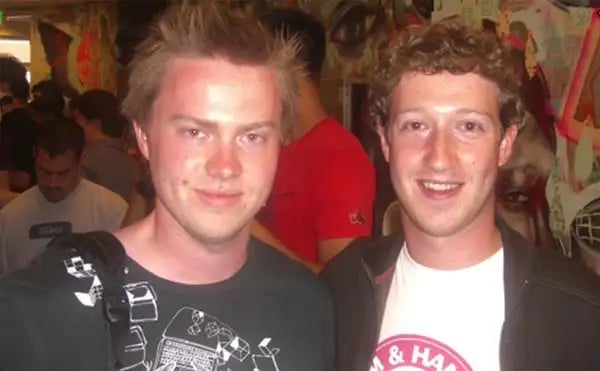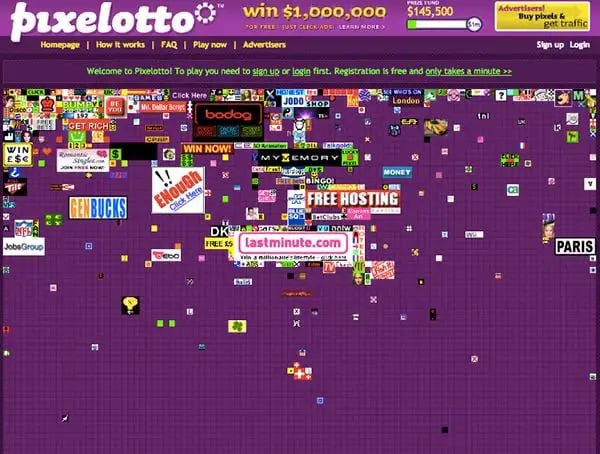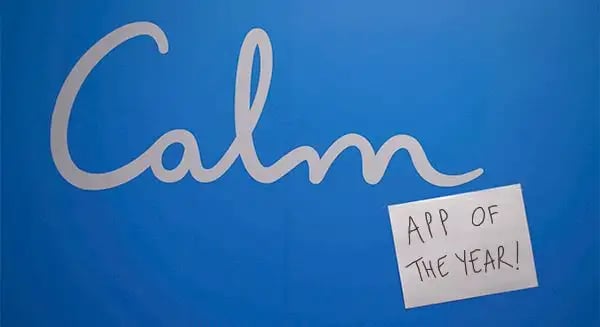On a cold afternoon in January 2006, 21-year-old Alex Tew sat in his childhood bedroom in Wilshire, England, watching the final pixels fill up on a computer screen.

He was about to become a millionaire.
In 4 months, Tew went from broke and aimless to the toast of the internet. All it took was $50, 2 days of his time, and an idea so simple that anyone could’ve cooked it up. In his words, “it was the get-rich-quick scheme that actually worked.”
But striking gold on the first try came with an unexpected downside — and it led Tew on an introspective journey that eventually netted him a much bigger windfall.
The beatboxing Brit
In his quaint countryside town, Tew was a misfit entrepreneur. At age 8, he was slinging hand-drawn comics in the schoolyard for $5 a pop, complete with with a chocolate bar “freemium.”
When he finished high school in 2002, he forewent college and decided to pursue an unusual passion: beatboxing.
Under the alias “A-Plus,” he toured around the UK and launched the world’s first beatboxing forum, HumanBeatbox.com.

In the early days of the internet, the forum brought together beatboxers from all over the world. They even gathered at a 200-person convention, where they discussed everything from how to replicate a snare drum to humming through the nose (“I never saw so much spit in my life,” recalls Tew).
But after a few years of stagnant growth, he sold the site to a friend and started to set his sights on bigger things.
“I was living at home, and I was fed up with being broke,” he tells us. “So, I asked myself a simple question: How can I make a million dollars?”
The Million Dollar Homepage
See, Tew had just enrolled in business school at the University of Nottingham, and was worried he’d be left saddled with enormous student loans.
Late one night in August 2005, he lay down in bed with a notepad and brainstormed cheap things that he could sell a million of. He jotted down dozens of ideas, including a terrible product he called the “Gum Slinger” (a small pouch for used chewing gum).
Then came the once-in-a-lifetime idea: he’d start a webpage with a million pixels that could be purchased for $1 apiece.
Two days and $50 in domain fees later, the Million Dollar Homepage was born.
The concept was extraordinarily simple: for a minimum of $100, an advertiser could buy a 100-pixel block (10 x 10 grid) and display an image or logo of their choosing, with a hyperlink. The only guideline was that it couldn’t be porn.
Two weeks in, Tew lobbied his friends and family members to purchase 4.7k pixels, and used the money to hire a PR agency to draft a press release. Miraculously, it was picked up by the BBC and The Guardian.
“The site made $3k that day,” recalls Tew. “I was like, ‘Holy crap. I just made this out of thin air. It felt like Monopoly Money’”
One month in, Tew had raked in $250k, and was receiving 65k hits per day. By the end of October, he’d made $500k from more than 1.4k advertisers ranging from Tenacious D to penis enlargement companies. (A full list of his advertisers is archived here.)
Come New Year’s Eve, 999k pixels had been purchased. Tew auctioned off the last 1k on eBay; MillionDollarWeightLoss.com bid $38k, bringing his grand total to $1.04m.
“In 4 months, I went from living at home with my parents to being a millionaire,” says Tew. “It was a get-rich-quick-scheme that actually worked.”
The post-success void
Newly minted with money (about $700k after taxes) and internet fame, Tew dropped out of college after one quarter and moved to London.
His instant success was a confidence boost, but it came with unexpected consequences.
“Success can actually be bad, and can teach you the wrong things,” he says. “I was thinking about ideas that would get attention instead of provide value.”
Between 2006 and 2010, he launched a series of ventures — Pixelotto, OneMillionPeople, PopJam — that attempted to leech off of his Million Dollar Homepage fame. Unable to replicate the hit, he moved to San Francisco and joined a friend’s incubator.

During this period, Tew wasn’t sleeping well, eating right, or sticking to his daily meditation regimen. It was taking a toll on his mental health, but “no one wanted to hear about a kid who made a million dollars and ended up depressed.”
A lifelong meditator, Tew began to realize that he needed to step back from the distractions and stressors of technology… so he built another website.
The result, donothingfor2minutes.com, was simply a 2-minute timer that would restart if you moved your cursor. It was a timely idea: the rise of the internet had brought with it concerns about “mental clutter,” and the tech-consuming public was increasingly looking for a peaceful respite.
In 2012, Tew decided to launch a more robust meditation app that would heed these needs.

Unfortunately, seed investors didn’t initially dig his “Nike for the mind” pitch.
“I got laughed out of some meetings,” he says. “When you talk about meditation with people who don’t meditate, and who work in tech, it’s so far outside of their world of focus.”
He eventually cobbled together $1.5m, and in 2012, launched Calm.
From the onset, he decided to make the app’s flagship feature — a 10-minute guided meditation — free, with the option to purchase premium access to things like Sleep Stories (“bedtime stories for adults”), and masterclasses on wellness topics, for $60/year.
The Rise of Calm.com
Since launching, Calm has seen a meteoric rise in both user growth and revenue.
The first year (2013), the app netted about $100k. By 2015, revenue ballooned to $2m, largely thanks to the hiring of Tamara Levitt, a seasoned meditation teacher who now narrates the daily exercises.
In the wake of the 2016 election, political turmoil and unrest lifted this figure to $7m, and an unexpected crowning as Apple’s 2017 App of the Year has since placed estimated revenue at around $37m.

Today, Calm has 600k paying subscribers, and sources say the company is raising a $25m+ round led by Insight Ventures, which will value them at $250m. That places them high up in the echelon of competitors like Headspace, Breethe, and Buddhify.
Tew, now 34, attributes this growth to “the anxiety and stressors of modern life.”
“Living in busy cities, going a million miles per hour, always being plugged in and slammed with information — that’s not a life we evolved to live.”
Calm’s San Francisco office is a mashup of industriousness and zen.
A ping pong table sits below a giant mural of a cloudy blue sky. Large monitors display real-time subscriber counts next to a neatly arranged row of plants. It’s a space designed to mimic the placidity of the natural world, but it bubbles with the intense productivity of any other young company.
Tew, dressed in all black, is perched near a bookshelf lined with a mixture of mindfulness texts (10% Happier; Instant Calm; The Monk Who Sold His Ferrari) and startup tomes (The Art of the Start, Sustaining Capitalism, Zero to One).
In some ways, the office is a perfect metaphor for Tew’s career.
What began as an unabashed drive for money and attention segued into a search for meaning and clarity. Now, he’s somewhere in the middle, just where he wants to be.
—
Hey there. Thanks for reading The Hustle. We hope you liked the story on the million dollar homepage.
Want more good stuff like this? Each week we send out our premium publication, Trends, which explores interesting startup trends before they explode. Click here to check it out!

